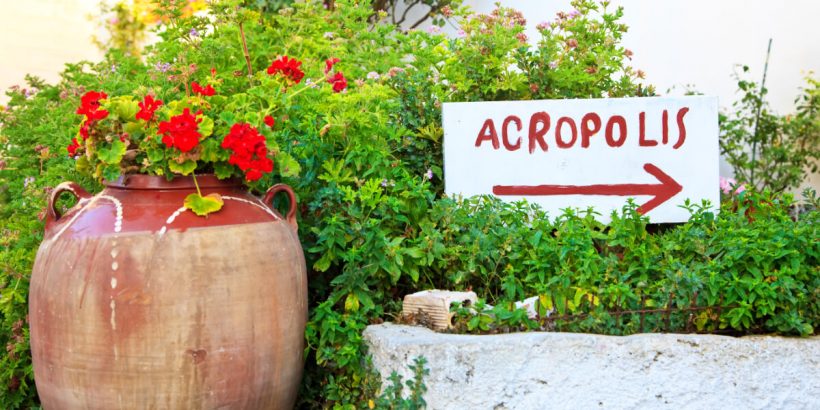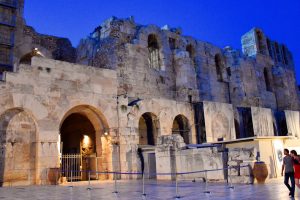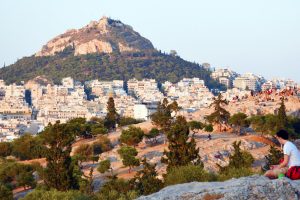As you would expect, the Acropolis has the final word of what to see in Athens. The temples on the sacred rock are considered the most important monuments in Western civilisation and have influenced architecture more than anything else since.
From the top, its mesmerising view has been a source of inspiration for many foreign travellers, poets and writers during the 18th century. Prior to this and because of the Ottoman occupation, travelling to Greece was difficult and Athens remained somewhat of a mystery to the outside world.
Find skip the line tickets to the Acropolis south entrance gate here online.
Skip the line e-tickets with an audio tour are available to purchase here in advance
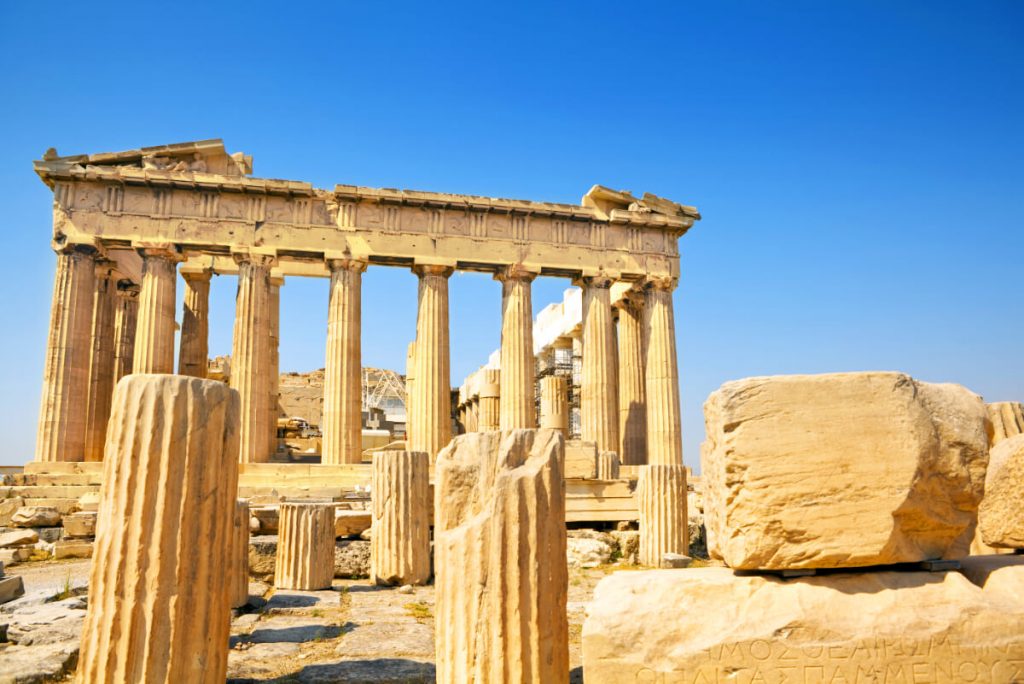
The Parthenon is an imposing sight and the centrepiece of the Acropolis of Athens. Photograph: Ivan Bastien/SS
William Christopher Wordsworth, the English Bishop and accomplished, poet wrote the following on what he saw when he visited the Acropolis around 1839, about seven years after Greece won its independence. What is interesting is that his description is not too far removed from what you see today, more than 170 years later.
“…form and colour are both exquisitely beautiful lying under a clear sky and still surmounted by the marble temples of its ancient Gods; he will see the city lying at its feet; he will follow with his eye the long line of the sacred Way to Eleusis; on this, the eastern, side of the City he will trace the winding course of the Ilissus; and beyond the walls, to the west, the olive groves of the ACADEMY, through which the Cephissus flows into the harbor of Piraeus, from which his eye will pass over that glorious gulf to the hills of Salamis on the right, and on the left to the peaked summit of Oros in the island of Aegina, and in the distance beyond them both, to the lofty crest of the Acrocorinthian Citadel.”
The ancient city of the Acropolis includes the Parthenon, the Erechtheion, the Temple of Athena Nike and the Propylea. On the northwest of the Acropolis stands the Areopagus (the Rock of Ares), which served as the high court of appeal for criminal and civil cases, during classical times. These days, it’s used by many to relax and enjoy the view.
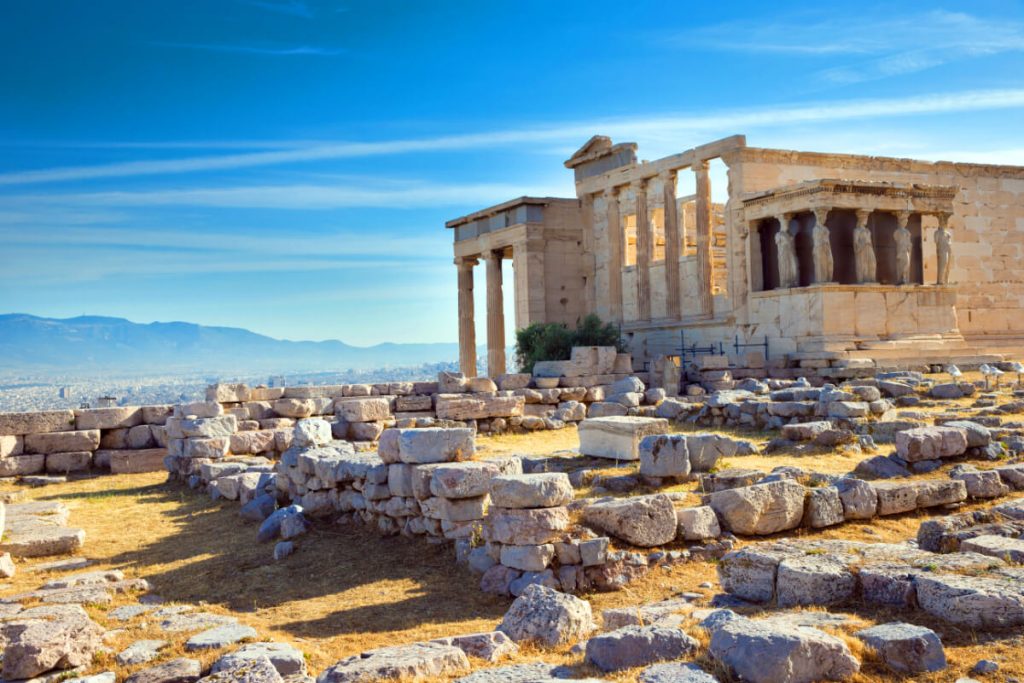
The Porch of the Maidens on the northern side of the Acropolis of Athens. Photograph: Akugasahagy/SS
Constructed during the late 5th century BC during the ‘Golden Age of Athens’, the Acropolis was built to honour the city’s patron goddess Athena. In the 5th century AD, the Parthenon was used as a church and later as a mosque by the Turks during the occupation.
Many might not know that the Parthenon was painted in contrasting colours above the level of the column capitals using natural pigments such as copper silicate for blue and iron oxide for red. Here’s an example of what it would have looked like.
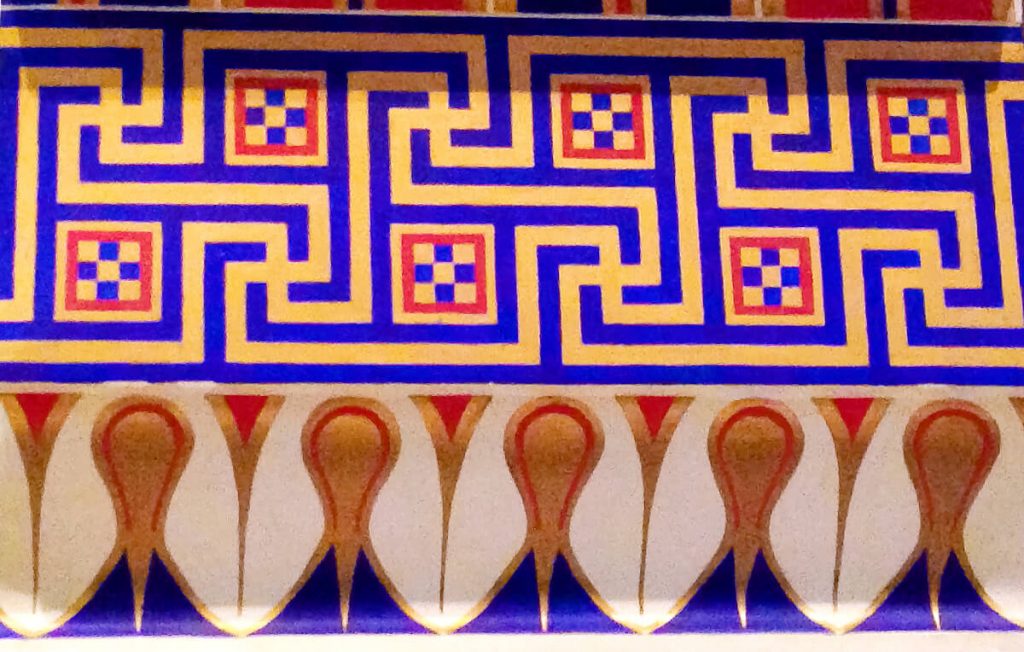
An example of the contrasting colours once found on the Parthenon. Photograph: Why Athens
Why Athens Tips:
- Skip the line tickets to the Acropolis south entrance gate here online.
- Skip the line e-tickets with an audio tour are available to purchase here in advance
- You should be aware the Acropolis has been under an extensive, restoration and conservation since 1975 and some of its temples will be under construction. On a whole, you will still be able to capture great photographs
- The marble grounds can be slippery, it is advisable to wear appropriate footwear
- Bring water and wear comfortable walking shoes. There is a canteen outside the ticket booth at the entrance of the Acropolis. Note you can only take water inside the archaeological site, other types of drinks or food are not permitted.
- Don’t forget your hat and sunscreen during summer!
Learn more about the Acropolis during the age of Pericles here.
or
You can find out 8 things you didn’t know about the Acropolis here.

